 |
Overview of Software Engineering Education Knowledge |
| << Guiding Principles |
| Guidelines for SE Curriculum Design and Delivery >> |
Chapter 4:
Overview of Software Engineering
Education
Knowledge
This
chapter describes the body
of knowledge that is appropriate
for an undergraduate
program
in software
engineering. The knowledge is
designated as the SEEK
(Software Engineering
Education
Knowledge).
4.1
Process
of Determining the SEEK
The
development model chosen for
determining SE2004 was based on
the model used to
construct
the CCCS volume. The
initial selection of the
SEEK areas was based on
the
SWEBOK
knowledge areas and multiple discussions
with dozens of SEEK area
volunteers. The
SEEK
area volunteers were divided
into groups representing
each individual SEEK area,
where
each
group contained roughly seven
volunteers. These groups were
assigned the task of
providing
the details of the units
that compose a particular
educational knowledge area and
the
further
refinement of these units
into topics. To facilitate
their work, references to
existing
related
software engineering body of
knowledge efforts (e.g.
SWEBOK, CSDP Exam, and
SEI
curriculum
recommendations) and a set of templates
for supporting the
generation of units and
topics
were provided.
After
the volunteer groups
generated an initial draft of
their individual education
knowledge area
details,
the steering committee held
a face-to-face forum that
brought together
education
knowledge
and pedagogy area volunteers to iterate
over the individual drafts
and generate an
initial
draft of the SEEK (see
Appendix B for an attendee
list). This workshop held
with this
particular
goal mirrored a similar
overwhelmingly successful workshop
held by CCCS at this
very
point in their development
process. Once the content of
the education knowledge
areas was
stabilized,
topics were identified to be core or
elective. Topics were also
labeled with one of
three
Bloom's taxonomy's levels of
educational objectives; namely,
knowledge, comprehension,
or
application. Only these
three levels of learning
were chosen from Bloom's
taxonomy, because
they
represent what knowledge may be
reasonably learned during an
undergraduate education.
After
the workshop, a draft of the
SEEK was completed. Subsequently,
the SEEK draft
went
through an
intensive internal review
(by a group of selected
experts in software engineering)
and
several
widely publicized public
reviews. After the
completion of each review,
the steering
committee
iterated over the reviewer
comments to further refine and
improve the contents of
the
SEEK.
4.2
Knowledge
Areas, Units, and
Topics
Knowledge is
a term used to describe the
whole spectrum of content
for the discipline:
information,
terminology, artifacts, data,
roles, methods, models, procedures,
techniques,
practices,
processes, and literature. The
SEEK is organized hierarchically
into three levels.
The
highest
level of the hierarchy is
the education knowledge
area, representing
a particular sub-
discipline
of software engineering that is
generally recognized as a significant
part of the body of
software
engineering knowledge that an
undergraduate should know.
Knowledge areas are
high-
level
structural elements used for
organizing, classifying, and describing
software engineering
knowledge.
Each area is identified by an
abbreviation, such as PRF for
professional practices.
SE2004
Volume 8/23/2004
17

Each area is
broken down into smaller
divisions called units,
which
represent individual
thematic
modules within an area.
Adding a two or three letter
suffix to the area
identifies each
unit; as an
example, PRF.com is a unit on
communication skills.
Each unit is
further subdivided into a
set of topics,
which
are the lowest level of
the hierarchy.
4.3
Core
Material
In
determining the SEEK, it is
recognized that software
engineering, as a discipline, is
relatively
young in
its maturation, and that
common agreement on the definition of an
education body of
knowledge is
evolving. The SEEK developed
and presented in this document is
based on a
variety of
previous studies and commentaries on the
recommended content for the
discipline. It
was
specially designed to support
the development of undergraduate
software engineering
curricula,
and therefore, does not
include all the knowledge
that would exist in a
more
generalized
body of knowledge representation.
Hence, a body of core
knowledge
has been
defined.
The core consists of the essential
material that professionals
teaching software
engineering
agree is necessary for
anyone to obtain an undergraduate
degree in this field.
By
insisting on
a broad consensus in the definition of
the core, it is hoped the core will be as
small
as possible,
giving institutions the
freedom to tailor the
elective components of the
curriculum in
ways
that meet their individual
needs.
The
following points should be emphasized to
clarify the relationship
between the SEEK and
the
steering
committee's ultimate goal of
providing undergraduate software
engineering curriculum
recommendations.
� The
core is not a complete
curriculum. Because
the core is defined as minimal, it
does not,
by itself,
constitute a complete undergraduate
curriculum. Every undergraduate
program will
include
additional units, both
within and outside the
software engineering body
of
knowledge,
which this document does
not attempt address.
�
Core
units are not necessarily
limited to a set of introductory
courses taken early in the
undergraduate
curriculum. Although
many of the units defined as
core are indeed
introductory,
there are also some core
units that clearly must be
covered only after
students
have
developed significant background in
the field. For example,
topics in such areas
as
project
management, requirements elicitation, and
abstract high-level modeling may
require
knowledge
and sophistication that lower-division
students do not possess.
Similarly,
introductory
courses may include elective
units1 alongside the
coverage of core material. The
designation
core
simply
means required
and
says nothing about the
level of the course in
which it
appears.
4.4
Unit of
Time
The
SEEK must define a metric
that establishes a standard of measurement, in
order to judge the
actual
amount of time required to
cover a particular unit.
Choosing such a metric was
quite
1
Material
offered as part of an undergraduate
program that falls outside
the core is considered to
be elective.
SE2004
Volume 8/23/2004
18
difficult
because no standard measure is recognized
throughout the world. For
consistency with
the
earlier curriculum reports,
namely the other computing
curricula volumes related to
this
effort, it
was decided to express time in
hours. An hour
corresponds to the actual in-class
time
required to
present the material in a traditional
lecture-oriented format (referred to in
this
document as
contact hours). To dispel
any potential confusion,
however, it is important to
underscore
the following observations
about the use of lecture
hours as a measure:
� The
steering committee does not
seek to endorse the lecture
format. Even
though we have
used a
metric that has its
roots in a classical, lecture-oriented
format, the steering
committee
believes
that there are other
styles--particular given recent
improvements in educational
technology--that
can be at least as effective. For some of
these styles, the notion of
hours
may be
difficult to apply. Even so,
the time specifications
should at least serve as a
comparative
measure, in the sense that a
5-hour unit will presumably take
roughly five times
as much
time to cover as a 1-hour
unit, independent of the
teaching style.
�
The
hours specified do not include time
spent outside of class. The
time assigned to a
unit
does
not include the instructor's
preparation time or the time
students spend outside of
class.
As a general
guideline, the amount of
out-of-class work is approximately
three times the
in-
hours (3 in
class and 9 outside).
�
The
hours listed for a unit
represent a minimum level of coverage.
The
time measurements
assigned
for each unit should be
interpreted as the minimum
amount of
time necessary to
enable a
student to perform the
learning objectives for that
unit. It is always appropriate
to
spend
more time on a unit than
the mandated minimum.
4.5
Relationship
of the SEEK to the
Curriculum
The
SEEK does not represent the
curriculum, but rather
provides the foundation for
the design,
implementation,
and delivery of the educational
units that make up a software
engineering
curriculum.
Other chapters of the SE2004
Volume provide guidance and
support on how to use
the
SEEK to develop a curriculum. In
particular, the organization and
content of the
knowledge
areas and
knowledge units should not
be deemed to imply how the
knowledge should be
organized
into education units or
activities. For example, the
SEEK does not advocate
a
sequential
ordering of the KAs (1st
CMP, 2nd FND, 3rd
PRF, etc.). Nor does it
suggest how
topics and
units should be combined
into education units.
Furthermore, the SEEK is not
intended
to purport
any special curriculum development
methodology (waterfall, incremental,
cyclic,
etc.).
4.6
Selection
of Knowledge Areas
The
SWEBOK Guide provided the
starting point for
determining knowledge areas.
Because both
the
SE2004 Steering Committee and
the SEEK area volunteers
felt strongly about
emphasizing
the
academic discipline of software
engineering, the area chosen to represent
the theoretical and
scientific
foundations of developing software
products eventually grew to one
half the size of the
core.
This prompted a reevaluation of
whether the original goals of
emphasizing the
discipline
were indeed
being met. The resulting
set of knowledge areas was rebalanced to
support these
goals.
The result is believed to
stress the fundamental
principles, knowledge, and practices
that
underlie
the software engineering
discipline in a form suitable
for undergraduate
education.
SE2004
Volume 8/23/2004
19
4.7
SE
Education Knowledge
Areas
In this
section, we describe the ten
knowledge areas that make up
the SEEK: Computing
Essentials
(CMP), Mathematical & Engineering
Fundamentals (FND), Professional
Practice
(PRF),
Software Modeling & Analysis
(MAA), Software Design
(DES), Software Verification
&
Validation
(VAV), Software Evolution
(EVL), Software Process
(PRO), Software
Quality
(QUA), and
Software Management (MGT).
The knowledge areas do not
include material
about
continuous
mathematics or the natural
sciences; the needs in these
areas will be discussed in
other parts
of the SE2004 volume. For
each knowledge area, there
is a short description and
then
a table
that delineates the units and
topics for that area.
For each knowledge unit,
recommended
contact
hours are designated. For
each topic, a Bloom taxonomy
level (indicating what
capability
a graduate
should possess) and the
topic's relevance (indicating
whether the topics is
essential,
desirable, or
optional to the core) are
designated. Table 1 summarizes the
SEEK knowledge
areas,
with their sets of knowledge
units, and lists the minimum
number of hours recommended
for
each area and unit.
Bloom's
attributes are specified
using one of the letters k, c, or a,
which represent:
� Knowledge
(k) - Remembering previously
learned material. Test
observation and recall of
information;
that is, "bring to mind
the appropriate information"
(e.g. dates, events,
places,
knowledge of
major ideas, mastery of
subject matter).
�
Comprehension
(c) - Understanding information and
the meaning of material presented.
For
example, be
able to translate knowledge to a new
context, interpret facts, compare,
contrast,
order,
group, infer causes, predict
consequences, etc.
�
Application
(a) - Ability to use learned
material in new and concrete
situations. For
example,
using
information, methods, concepts, and
theories to solve problems
requiring the skills
or
knowledge
presented.
A topic's
relevance to the core is represented as
follows:
� Essential
(E) - The topic is part of
the core.
�
Desirable
(D) - The topic is not
part of the core, but it
should be included in the core of
a
particular
program if possible; otherwise, it
should be considered as part of
elective
materials.
�
Optional
(O) - The topic should be
considered as elective only.
SE2004
Volume 8/23/2004
20
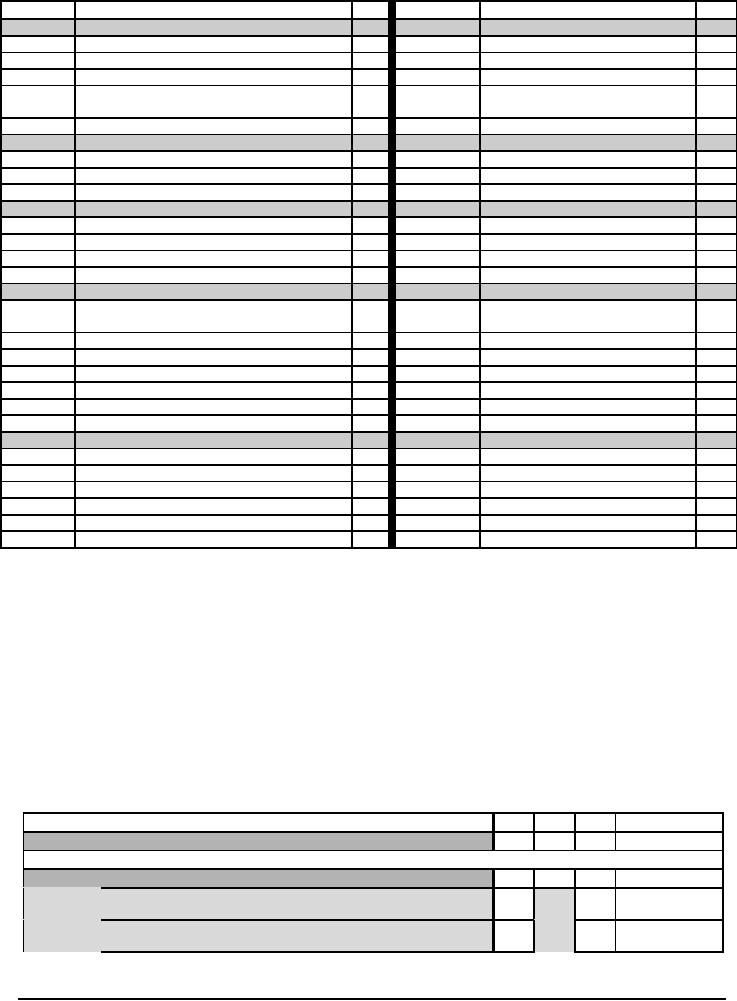
Table
1: SEEK Knowledge Areas and
Knowledge Units*
KA/KU
Title
hrs
KA/KU
Title
hrs
CMP
Computing
Essentials
172
VAV
Software V &
V
42
CMP.cf
Computer
Science foundations
140
VAV.fnd
V&V
terminology and
foundations
5
CMP.ct
Construction
technologies
20
VAV.rev
Reviews
6
CMP.tl
Construction
tools
4
VAV.tst
Testing
21
CMP.fm
Formal construction
methods
8
VAV.hct
Human
computer UI testing
and
6
evaluation
VAV.par
Problem
analysis and reporting
4
FND
Mathematical
& Engineering Fundamentals
89
EVL
Software
Evolution
10
FND.mf
Mathematical
foundations
56
EVO.pro
Evolution
processes
6
FND.ef
Engineering
foundations for software
23
EVO.ac
Evolution
activities
4
FND.ec
Engineering
economics for software
10
PRF
Professional
Practice
35
PRO
Software
Process
13
PRF.psy
Group
dynamics / psychology
5
PRO.con
Process
concepts
3
PRF.com
Communications
skills (specific to SE)
10
PRO.imp
Process
implementation
10
PRF.pr
Professionalism
20
MAA
Software
Modeling & Analysis
53
QUA
Software
Quality
16
MAA.md
Modeling
foundations
19
QUA.cc
Software
quality concepts and
2
culture
MAA.tm
Types of
models
12
QUA.std
Software
quality standards
2
MAA.af
Analysis
fundamentals
6
QUA.pro
Software
quality processes
4
MAA.rfd
Requirements
fundamentals
3
QUA.pca
Process
assurance
4
MAA.er
Eliciting
requirements
4
QUA.pda
Product
assurance
4
MAA.rsd
Requirements
specification & documentation
6
MAA.rv
Requirements
validation
3
DES
Software
Design
45
MGT
Software
Management
19
DES.con
Design
concepts
3
MGT.con
Management
concepts
2
DES.str
Design
strategies
6
MGT.pp
Project
planning
6
DES.ar
Architectural
design
9
MGT.per
Project
personnel and organization
2
DES.hci
Human
computer interface design
12
MGT.ctl
Project
control
4
DES.dd
Detailed
design
12
MGT.cm
Software
configuration management
5
DES.ste
Design
support tools and
evaluation
3
* Section
4.18 (Systems and Application
Specialties) includes additional
material, which is
not
part of
the core, which can be used
to extend core knowledge and provide
for specialization.
4.8
Computing
Essentials
Description
Computing
essentials includes the computer
science foundations that
support the design and
construction
of software products. This
area also includes knowledge
about the
transformation
of a design
into an implementation, the
tools used during this
process, and formal
software
construction
methods.
Units
and Topics
Reference
k,c,a
E,D,O Hours Related
Topics
CMP
172
Computing
Essentials
CMP.cf
Computer
Science foundations
140
CMP.cf.1
Programming
Fundamentals (CCCS PF1 to
PF5) (control &
data,
a
E
typing,
recursion)
CMP.cf.2
Algorithms,
Data Structures/Representation (static
& dynamic)
a
E
CMP.ct.1,CMP.f
m.5,MAA.cc.1
and
Complexity (CCCS AL 1 to AL 5)
SE2004
Volume 8/23/2004
21
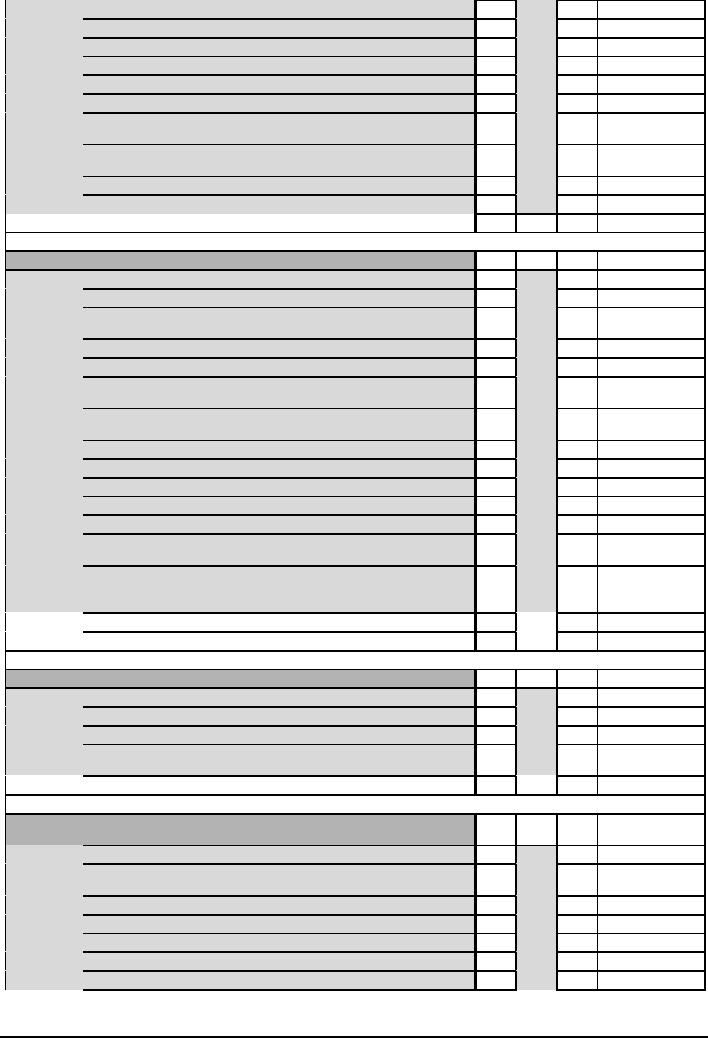
CMP.cf.3
Problem
solving techniques
a
E
CMP.cf.1
CMP.cf.4
Abstraction
use and support for
(encapsulation, hierarchy,
etc)
a
E
MAA.md.1
CMP.cf.5
Computer
organization (parts of CCCS AR 1 to AR
5)
c
E
CMP.cf.6
Basic
concept of a system
c
E
MAA.rfd.7
CMP.cf.7
Basic user
human factors (I/O, error
messages, robustness)
c
E
DES.hci
CMP.cf.8
Basic
developer human factors
(comments, structure,
readability)
c
E
CMP.cf.1
CMP.cf.9
Programming
language basics (key
concepts from CCCS
PL1-
a
E
CMP.ct.3,CMP.ct
.4
PL6)
CMP.cf.10
Operating
system basics (key concepts
from CCCS OS1-OS5)
c
E
CMP.ct.10,CMP.
ct.15
CMP.cf.11
Database
basics
c
E
DES.con.2
CMP.cf.12
Network
communication basics
c
E
CMP.cf.13
Semantics of
programming languages
D
CMP.ct
Construction
technologies
20
CMP.ct.1
API design
and use
a
E
DES.dd.4
CMP.ct.2
Code reuse
and libraries
a
E
CMP.cf.1
CMP.ct.3
Object-oriented
run-time issues (e.g. polymorphism,
dynamic
a
E
CMP.cf.1,9,DES.
str.2
binding,
etc.)
CMP.ct.4
Parameterization
and generics
a
E
CMP.cf.1
CMP.ct.5
Assertions,
design by contract, defensive
programming
a
E
MAA.md.2
CMP.ct.6
Error
handling, exception handling,
and fault tolerance
a
E
DES.con.2,VAV.t
st.2,VAV.tst.9
CMP.ct.7
State-based
and table driven
construction techniques
c
E
FND.mf.7,MAA.t
m.2,CMP.cf.10
CMP.ct.8
Run-time
configuration and
internationalization
a
E
DES.hci.6
CMP.ct.9
Grammar-based
input processing
(parsing)
a
E
FND.mf.8
CMP.ct.10
Concurrency
primitives (e.g. semaphores,
monitors, etc.)
a
E
CMP.cf.10
CMP.ct.11
Middleware
(components and
containers)
c
E
DES.dd.3,5
CMP.ct.12
Construction
methods for distributed
software
a
E
CMP.cf.2
CMP.ct.13
Constructing
heterogeneous (hardware and
software) systems;
c
E
DES.ar.3
hardware-software
codesign
CMP.ct.14
Performance
analysis and tuning
k
E
FND.ef.4,DES.co
n.6,CMP.tl.4,VAV
.fnd.4
CMP.ct.15
Platform
standards (Posix
etc.)
D
CMP.ct.16
Test-first
programming
D
VAV.tst.1
CMP.tl
Construction
tools
4
DES.ste.1
CMP.tl.1
Development
environments
a
E
CMP.tl.2
GUI
builders
c
E
DES.hci
CMP.tl.3
Unit
testing tools
c
E
VAV.tst.1
CMP.tl.4
Application
oriented languages (e.g.
scripting, visual,
domain-
c
E
specific,
markup, macros, etc.)
CMP.tl.5
Profiling,
performance analysis and
slicing tools
D
CMP.ct.14
CMP.fm
Formal
construction methods
8
DES.dd.9,MAA.af
.6,EVO.ac.7
CMP.fm.1
Application of
abstract machines (e.g. SDL,
Paisley, etc.)
k
E
CMP.fm.2
Application of
specification languages and
methods (e.g. ASM,
a
E
MAA.md.3,MAA.r
sd.3
B, CSP,
VDM, Z)
CMP.fm.3
Automatic
generation of code from a
specification
k
E
CMP.fm.4
Program
derivation
c
E
CMP.fm.5
Analysis of
candidate implementations
c
E
MAA.cf.2
CMP.fm.6
Mapping of a
specification to different
implementations
k
E
CMP.fm.7
Refinement
c
E
SE2004
Volume 8/23/2004
22
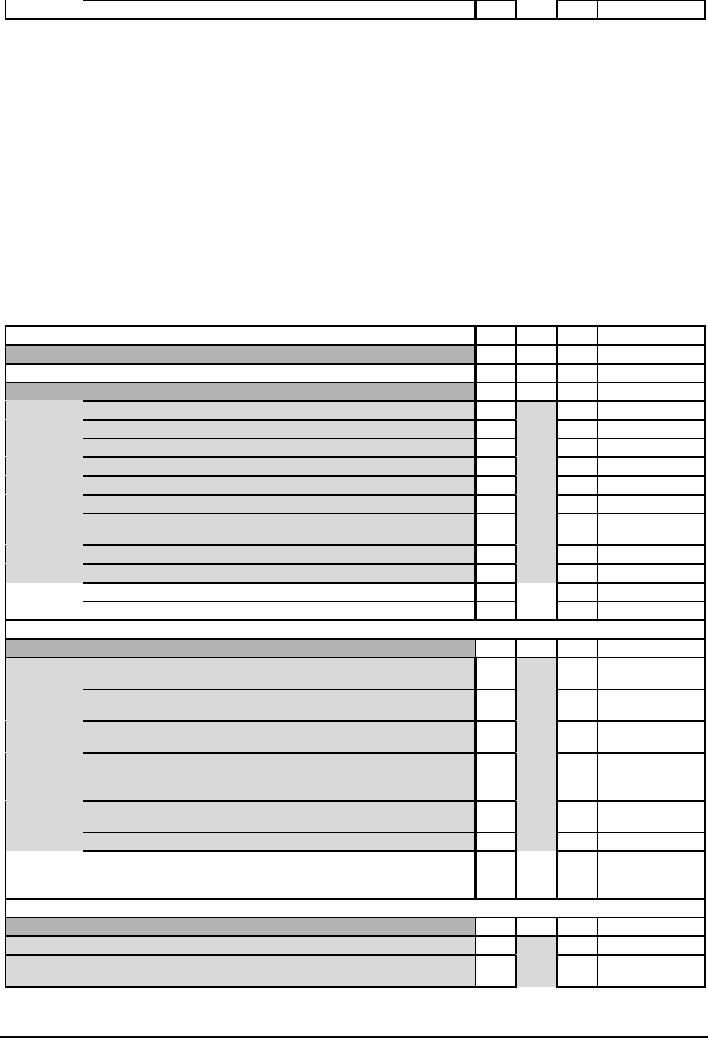
CMP.fm.8
Proofs of
correctness
D
FND.mf.3
4.9
Mathematical
and Engineering
Fundamentals
Description
The
mathematical and engineering fundamentals
of software engineering provide
theoretical and
scientific
underpinnings for the
construction of software products
with desired attributes.
These
fundamentals
support describing software
engineering products in a precise
manner. They
provide
the mathematical foundations to
model and facilitate reasoning
about these products
and
their
interrelations, as well as form
the basis for a predictable
design process. A central theme
is
engineering
design: a decision-making process of
iterative nature, in which
computing,
mathematics,
and engineering sciences are
applied to deploy available
resources efficiently to
meet a
stated objective.
Units
and Topics
Reference
k,c,a
E,D,O Hours Related
Topics
FND
89
Mathematical
and Engineering
Fundamentals
FND.mf
Mathematical
foundations*
56
FND.mf.1
Functions,
Relations and Sets (CCCS
DS1)
a
E
FND.mf.2
Basic
Logic (propositional and
predicate) (CCCS DS2)
a
E
MAA.md.2,3
FND.mf.3
Proof
Techniques (direct, contradiction,
inductive) (CCCS DS3)
a
E
CMP.fm.8
FND.mf.4
Basic
Counting (CCCS DS4)
a
E
FND.mf.5
Graphs and
Trees (CCCS DS5)
a
E
CMP.cf.2
FND.mf.6
Discrete
Probability (CCCS
DS6)
a
E
FND.ef.2
FND.mf.7
Finite
State Machines, regular
expressions
c
E
CMP.ct.7,MAA.t
m.2
FND.mf.8
Grammars
c
E
CMP.ct.9
FND.mf.9
Numerical
precision, accuracy and
errors
c
E
FND.mf.10
Number
Theory
D
FND.mf.11
Algebraic
Structures
O
FND.ef
Engineering
foundations for
software
23
FND.ef.1
Empirical
methods and experimental
techniques (e.g.,
computer-
c
E
VAV.fnd.4,VAV.h
ct.6
related
measuring techniques for CPU
and memory usage)
FND.ef.2
Statistical
analysis (including simple
hypothesis testing,
a
E
FND.mf.6
estimating,
regression, correlation
etc.)
FND.ef.3
Measurement
and metrics
k
E
PRO.con.5,PRO.i
mp.4
FND.ef.4
Systems
development (e.g. security,
safety, performance,
effects
k
E
MAA.af.4,DES.co
n.6,VAV.fnd.4,VA
of scaling,
feature interaction,
etc.)
V.tst.9
FND.ef.5
Engineering
design (e.g. formulation of
problem, alternative
c
E
FND.ec.3,MAA.af
.1
solutions,
feasibility, etc.)
FND.ef.6
Theory of
measurement (e.g. criteria
for valid
measurement)
c
E
O
FND.ef.7
Engineering
science for other
engineering disciplines (strength
of
materials,
digital system principles,
logic design, fundamentals
of
thermodynamics,
etc.)
FND.ec
Engineering
economics for
software
10
PRF.pr.6
FND.ec.1
Value
considerations throughout the
software lifecycle
k
E
FND.ec.2
Generating
system objectives (e.g.
participatory design,
c
E
PRF.psy.4,MAA.
er.2
stakeholder
win-win, quality function
deployment, prototyping,
SE2004
Volume 8/23/2004
23
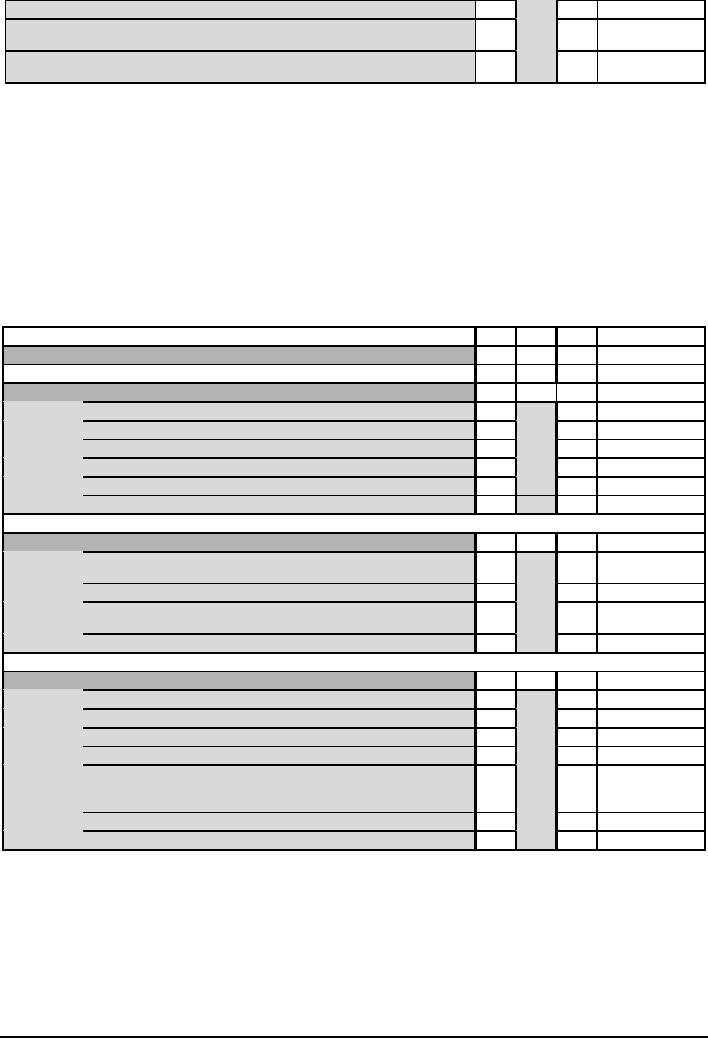
etc.)
FND.ec.3
Evaluating
cost-effective solutions (e.g.
benefits realization,
c
E
DES.con.7,MAA.
af.4,MGT.pp.4
tradeoff
analysis, cost analysis,
return on investment,
etc.)
FND.ec.4
Realizing
system value (e.g.
prioritization, risk
resolution,
k
E
MAA.af.4,MGT.p
p.6
controlling
costs, etc.)
* Topics
1-6 correspond to Computer
Science curriculum guidelines
for discrete structures
1-6
4.10
Professional Practice
Description
Professional
Practice is concerned with the
knowledge, skills, and attitudes
that software
engineers
must possess to practice
software engineering in a professional,
responsible, and
ethical
manner. The study of
professional practices includes the
areas of technical
communication,
group dynamics and psychology, and
social and professional
responsibilities.
Units
and Topics
Reference
k,c,a
E,D,O Hours Related
Topics
PRF
35
Professional
Practice
PRF.psy
Group
dynamics / psychology
5
PRF.psy.1
Dynamics of
working in teams/groups
a
E
PRF.psy.2
Individual
cognition (e.g.
limits)
k
E
DES.hci.10
PRF.psy.3
Cognitive
problem complexity
k
E
MAA.rfd.8
PRF.psy.4
Interacting
with stakeholders
c
E
FND.ec.2
PRF.psy.5
Dealing
with uncertainty and
ambiguity
k
E
PRF.psy.6
Dealing
with multicultural
environments
k
E
PRF.com
Communications
skills (specific to
SE)
10
PRF.com.1
Reading,
understanding and summarizing
reading (e.g. source
a
E
MAA.rsd.1
code,
documentation)
PRF.com.2
Writing
(assignments, reports, evaluations,
justifications, etc.)
a
E
PRF.com.3
Team and
group communication (both
oral and written,
email,
a
E
MGT.per
etc.)
PRF.com.4
Presentation
skills
a
E
PRF.pr
Professionalism
20
PRF.pr.1
Accreditation,
certification, and
licensing
k
E
PRF.pr.2
Codes of
ethics and professional
conduct
c
E
PRF.pr.3
Social,
legal, historical, and
professional issues and
concerns
c
E
PRF.pr.4
The nature
and role of professional
societies
k
E
PRF.pr.5
The nature
and role of software
engineering standards
k
E
MAA.rsd.1,CMP.c
t.14,PRO.imp.3,7,
QUA.std
PRF.pr.6
The
economic impact of
software
c
E
FND.ec
PRF.pr.7
Employment
contracts
k
E
SE2004
Volume 8/23/2004
24
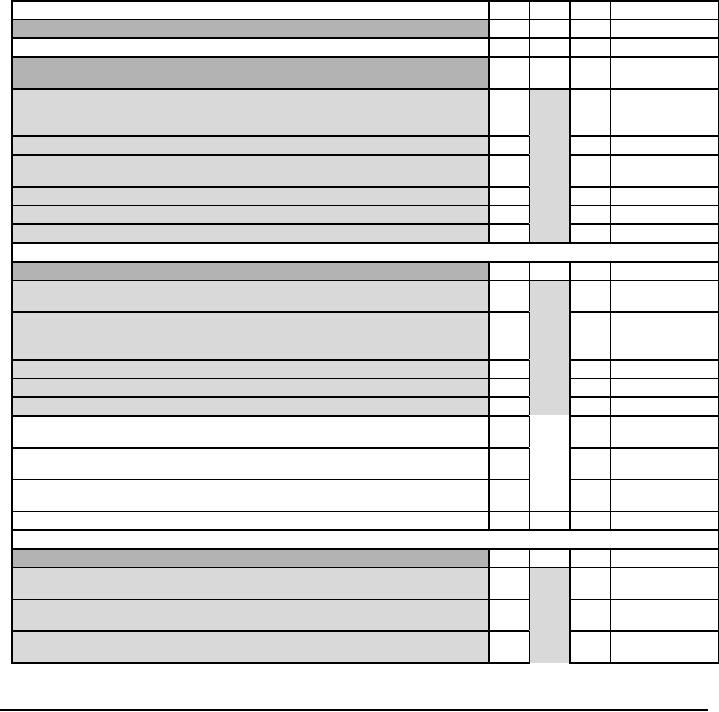
4.11
Software Modeling and
Analysis
Description
Modeling and
analysis can be considered core concepts in any
engineering discipline,
because
they
are essential to documenting and
evaluating design decisions and alternatives.
Modeling
and analysis
is first applied to the
analysis, specification, and validation
of requirements.
Requirements
represent the real-world needs of users,
customers, and other stakeholders
affected
by the
system. The construction of
requirements includes an analysis of
the feasibility of
the
desired
system, elicitation and analysis of
stakeholders' needs, the
creation of a precise
description
of what the system should
and should not do along with
any constraints on
its
operation
and implementation, and the validation of
this description or specification by
the
stakeholders.
Units
and Topics
Reference
k,c,a
E,D,O Hours Related
Topics
MAA
53
Software
Modeling and
Analysis
MAA.md
Modeling
foundations
19
PRO.con.3,QUA.
pro.1,QUA.pda.3
MAA.md.1
Modeling
principles (e.g. decomposition,
abstraction,
a
E
CMP.cf.4
generalization,
projection/views, explicitness, use of
formal
approaches,
etc.)
MAA.md.2
Pre &
post conditions,
invariants
c
E
CMP.ct.5
MAA.md.3
Introduction to
mathematical models and
specification languages
c
E
MAA.rsd.3,CMP.f
m.2
(Z, VDM,
etc.)
MAA.md.4
Properties of
modeling languages
k
E
MAA.md.5
Syntax vs.
semantics (understanding model
representations)
c
E
CMP.cf.9
MAA.md.6
Explicitness
(make no assumptions, or state
all assumptions)
k
E
MAA.tm
Types of
models
12
MAA.md
MAA.tm.1
Information
modeling (e.g. entity-relationship
modeling, class
a
E
MAA.rsd.3,DES.d
d.5
diagrams,
etc.)
MAA.tm.2
Behavioral
modeling (e.g. structured
analysis, state
diagrams,
a
E
FND.mf.7,MAA.er
.2,MAA.rsd.3,DE
use case
analysis, interaction diagrams,
failure modes and
S.dd.5
effects
analysis, fault tree
analysis etc.)
MAA.tm.3
Structure
modeling (e.g. architectural,
etc.)
c
E
MAA.rfd.7
MAA.tm.4
Domain
modeling (e.g. domain
engineering approaches,
etc.)
k
E
MAA.tm.5
Functional
modeling (e.g. component
diagrams, etc.)
c
E
MAA.tm.6
Enterprise
modeling (e.g. business
processes, organizations,
D
goals,
etc.)
MAA.tm.7
Modeling
embedded systems (e.g.
real-time schedulability
D
analysis,
external interface analysis,
etc.)
MAA.tm.8
Requirements
interaction analysis (e.g.
feature interaction,
house
D
of quality,
viewpoint analysis,
etc.)
MAA.tm.9
Analysis
Patterns (e.g. problem
frames, specification re-use,
etc.)
D
MAA.af
Analysis
fundamentals
6
MAA.af.1
Analyzing
well-formedness (e.g. completeness,
consistency,
a
E
robustness,
etc.)
MAA.af.2
Analyzing
correctness (e.g. static
analysis, simulation,
model
a
E
checking,
etc.)
MAA.af.3
Analyzing
quality (non-functional) requirements
(e.g. safety,
a
E
FND.ef.4,QUA.pd
a,DES.con.6,VAV
security,
usability, performance, root
cause analysis, etc.)
SE2004
Volume 8/23/2004
25
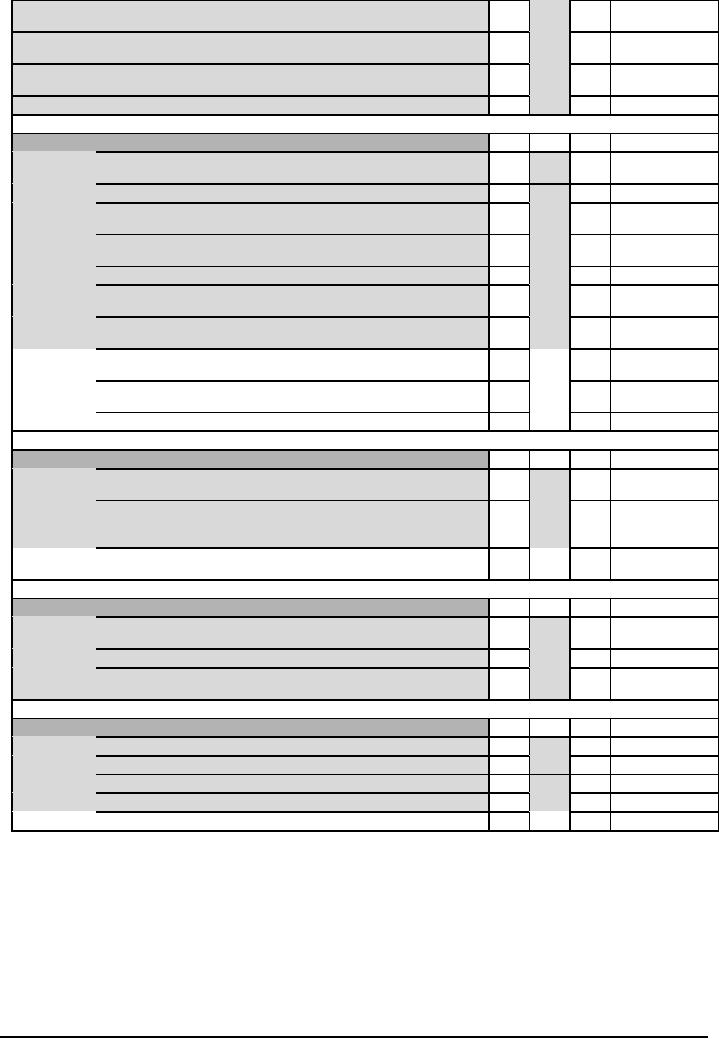
.fnd.4,VAV.tst.9,V
AV.hct,EVO.ac.4
MAA.af.4
Prioritization,
trade-off analysis, risk
analysis, and impact
c
E
FND.ec.3,4,QUA.
pda.4
analysis
MAA.af.5
Traceability
c
E
DES.ar.4,EVO.pr
o.2
MAA.af.6
Formal
analysis
k
E
CMP.fm
MAA.rfd
Requirements
fundamentals
3
MAA.rfd.1
Definition of
requirements (e.g. product,
project, constraints,
c
E
system
boundary, external, internal,
etc.)
MAA.rfd.2
Requirements
process
c
E
PRO.con.3
MAA.rfd.3
Layers/levels of
requirements (e.g. needs,
goals, user
c
E
MAA.rsd
requirements,
system requirements, software
requirements, etc.)
MAA.rfd.4
Requirements
characteristics (e.g. testable,
non-ambiguous,
c
E
MAA.af.5
consistent,
correct, traceable, priority,
etc.)
MAA.rfd.5
Managing
changing requirements
c
E
MGT.ctl.1
MAA.rfd.6
Requirements
management (e.g. consistency
management,
k
E
CMP.ct.3
release
planning, reuse,
etc.)
MAA.rfd.7
Interaction
between requirements and
architecture
k
E
MAA.tm.3,DES.ar
.4,EVO.pro.2
MAA.rfd.8
Relationship of
requirements to systems engineering,
human-
D
CMP.cf.6
centered
design, etc.
MAA.rfd.9
Wicked
problems (e.g. ill-structured
problems; problems
with
D
PRF.psy.3
many
solutions; etc.)
MAA.rfd.10
COTS as a
constraint
D
MAA.er
Eliciting
requirements
4
MAA.er.1
Elicitation
Sources (e.g. stakeholders,
domain experts,
c
E
PRF.psy.4
operational
and organization environments,
etc.)
MAA.er.2
Elicitation
Techniques (e.g. interviews,
questionnaires/surveys,
c
E
FND.ec.2,MAA.er
.1,
PRF.psy.5
prototypes,
use cases, observation,
participatory techniques,
etc.)
MAA.er.3
Advanced
techniques (e.g. ethnographic,
knowledge elicitation,
O
etc.)
MAA.rsd
Requirements
specification &
documentation
6
MAA.rsd.1
Requirements
documentation basics (e.g.
types, audience,
k
E
PRF.pr.5
structure,
quality, attributes, standards,
etc.)
MAA.rsd.2
Software
requirements specification
a
E
MAA.rsd.3
Specification
languages (e.g. structured
English, UML, formal
k
E
MAA.md.3,CMP.f
m.2
languages
such as Z, VDM, SCR, RSML,
etc.)
MAA.rv
Requirements
validation
3
MAA.rv.1
Reviews
and inspection
a
E
VAV.rev
MAA.rv.2
Prototyping to
validate requirements (Summative
prototyping)
k
E
MAA.rv.3
Acceptance
test design
c
E
VAV.tst.8
MAA.rv.4
Validating
product quality
attributes
c
E
QUA.cc.5
MAA.rv.5
Formal
requirements analysis
D
MAA.af.1
SE2004
Volume 8/23/2004
26
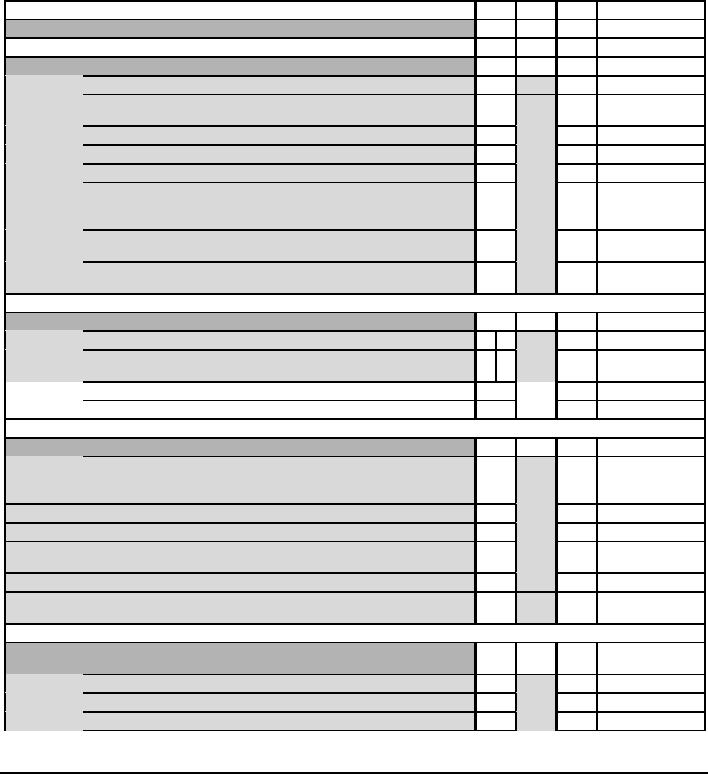
4.12
Software Design
Description
Software
design is concerned with issues,
techniques, strategies, representations, and
patterns
used to
determine how to implement a
component or a system. The design will
conform to
functional
requirements within the
constraints imposed by other requirements
such as resource,
performance,
reliability, and security. This
area also includes specification of
internal interfaces
among
software components, architectural
design, data design, user interface design,
design
tools, and
the evaluation of design.
Units
and Topics
Reference
k,c,a
E,D,O Hours Related
Topics
DES
45
Software
Design
DES.con
Design
concepts
3
DES.con.1
Definition of
design
c
E
DES.con.2
Fundamental
design issues (e.g. persistent
data, storage
c
E
CMP.ct.6,VAV.tst
.2,CMP.cf.11
management,
exceptions, etc.)
DES.con.3
Context of
design within multiple
software development life
cycles
k
E
DES.con.4
Design
principles (information hiding,
cohesion and
coupling)
a
E
DES.con.5
Interactions
between design and
requirements
c
E
DES.ar.4
DES.con.6
Design for
quality attributes (e.g.
reliability, usability,
k
E
FND.ef.4,MAA.tm
.4,DES.ar.2,CMP.
maintainability,
performance, testability, security,
fault tolerance,
ct.14,VAV.fnd.4
etc.)
DES.con.7
Design
trade-offs
k
E
FND.ec.3,DES.ar
.2,DES.ev
DES.con.8
Architectural
styles, patterns,
reuse
c
E
DES.ar,DES.dd.2
,CMP.ct.3
DES.str
Design
strategies
6
DES.str.1
Function-oriented
design
ac
E
DES.str.2
Object-oriented
design
ca
E
CMP.cf.9,DES.dd
.5,CMP.ct.4
DES.str.3
Data-structure
centered design
D
DES.str.4
Aspect
oriented design
O
DES.ar
Architectural
design
9
DES.ar.1
Architectural
styles (e.g. pipe-and-filter,
layered, transaction-
a
E
DES.con.8
centered,
peer-to-peer, publish-subscribe,
event-based, client-
server,
etc.)
DES.ar.2
Architectural
trade-offs between various
attributes
a
E
FND.ec.3
DES.ar.3
Hardware issues in
software architecture
k
E
CMP.ct.13
DES.ar.4
Requirements
traceability in architecture
k
E
MAA.af.5,DES.co
n.5,EVO.pro.2
DES.ar.5
Domain-specific
architectures and
product-lines
k
E
DES.ar.6
Architectural
notations (e.g. architectural
structure viewpoints &
c
E
MAA.tm
representations,
component diagrams,
etc.)
DES.hci
Human
computer interface
design
12
CMP.cf.7,VAV.hc
t,CMP.ct.2
DES.hci.1
General
HCI design principles
a
E
DES.hci.2
Use of
modes, navigation
a
E
DES.hci.3
Coding
techniques and visual design
(e.g. color, icons,
fonts,
c
E
SE2004
Volume 8/23/2004
27
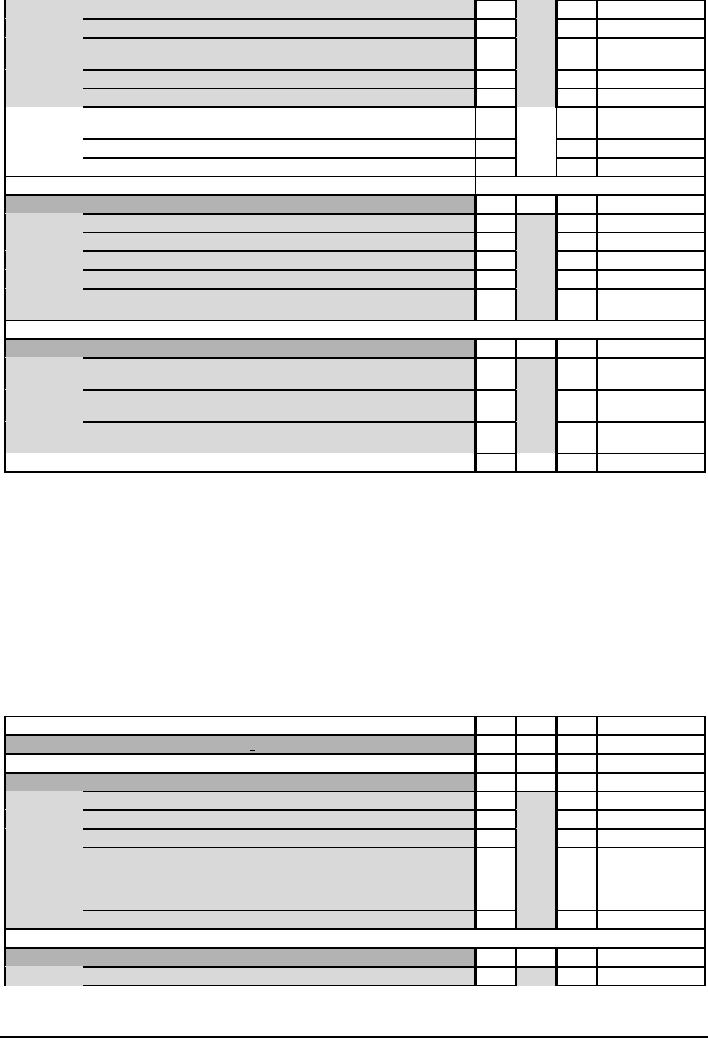
etc.)
DES.hci.4
Response time and
feedback
a
E
DES.hci.5
Design modalities (e.g.
menu-driven, forms,
question-answering,
a
E
etc.)
DES.hci.6
Localization and
internationalization
c
E
CMP.ct.8
DES.hci.7
Human computer interface
design methods
c
E
DES.hci.8
Multi-media (e.g. I/O
techniques, voice, natural
language, web-
D
page,
sound, etc.)
DES.hci.9
Metaphors and conceptual
models
D
DES.hci.10
Psychology of HCI
D
PRF.psy.2
DES.dd
Detailed
design
12
DES.dd.1
One
selected design method (e.g.
SSA/SD, JSD, OOD,
etc.)
a
E
DES.dd.2
Design
patterns
a
E
DES.con.8
DES.dd.3
Component
design
a
E
CMP.ct.11
DES.dd.4
Component
and system interface
design
a
E
CMP.ct.2
DES.dd.5
Design
notations (e.g. class and
object diagrams, UML,
state
c
E
MAA.tm
diagrams,
etc.)
DES.ste
Design
support tools and
evaluation
3
DES.ste.1
Design
support tools (e.g.
architectural, static analysis,
dynamic
a
E
CMP.ct
evaluation,
etc.)
DES.ste.2
Measures of
design attributes (e.g.
coupling, cohesion,
k
E
information-hiding,
separation of concerns,
etc.)
DES.ste.3
Design
metrics (e.g. architectural
factors, interpretation,
metric
a
E
sets in
common use, etc.)
DES.ste.4
Formal
design analysis
O
MAA.af.2
4.13
Software Verification and
Validation
Description
Software
verification and validation uses
both static and dynamic
techniques of system
checking
to ensure
that the resulting program
satisfies its specification and that
the program as
implemented
meets the expectations of
the stakeholders. Static
techniques are concerned
with
the
analysis and checking of system
representations throughout all stages of
the software life
cycle,
while dynamic techniques
involve only the implemented
system.
Units
and Topics
Reference
k,c,a
E,D,O Hours Related
Topics
VAV
42
Software
Verification and
Validation
VAV.fnd
V&V
terminology and
foundations
5
VAV.fnd.1
Objectives
and constraints of V&V
k
E
VAV.fnd.2
Planning
the V&V effort
k
E
VAV.fnd.3
Documenting V&V
strategy, including tests
and other artifacts
a
E
VAV.fnd.4
Metrics &
Measurement (e.g. reliability,
usability, performance,
k
E
FND.ef.4,MAA.af.
2,DES.con.6,CM
etc.)
P.ct.14,PRO.con.
4
VAV.fnd.5
V&V involvement at
different points in the
lifecycle
k
E
VAV.rev
Reviews
6
MAA.rv.1
VAV.rev.1
Desk
checking
a
E
SE2004
Volume 8/23/2004
28
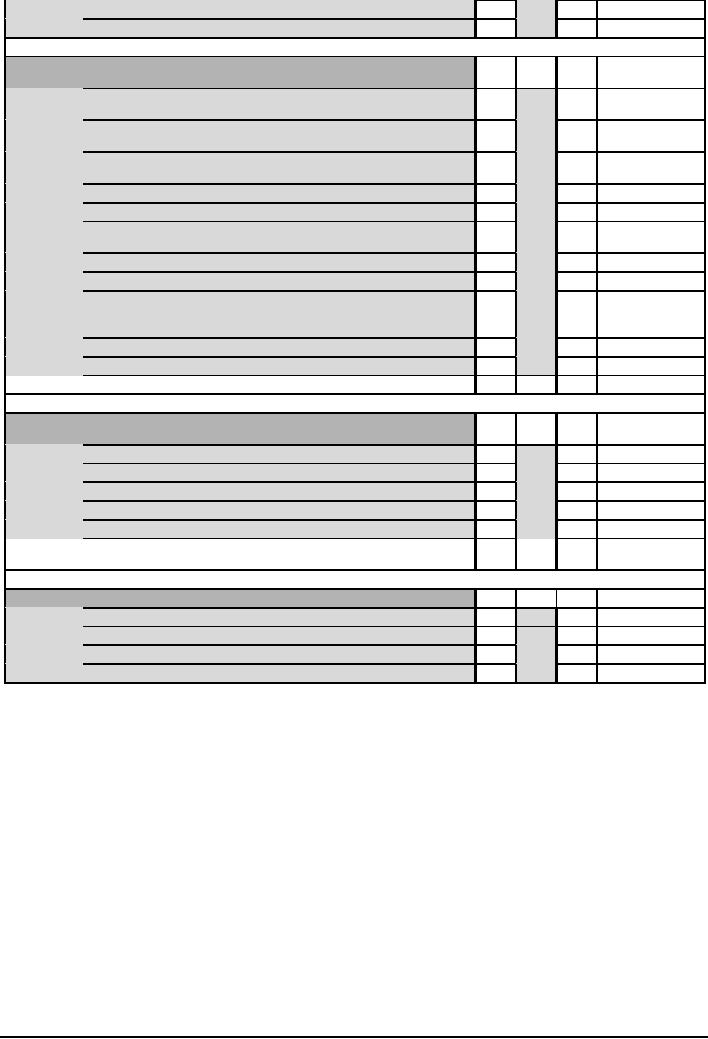
VAV.rev.2
Walkthroughs
a
E
VAV.rev.3
Inspections
a
E
VAV.hct.2,3
VAV.tst
Testing
21
MAA.rfd.4,DES.c
on.6,CMP.ct.15
VAV.tst.1
Unit
testing
a
E
CMP.ct.15,CMP.c
t.3
VAV.tst.2
Exception
handling (writing test cases
to trigger exception
a
E
DES.con.2,CMP.
ct.6
handling;
designing good
handling)
VAV.tst.3
Coverage
analysis and Structure Based
Testing (e.g.
statement,
a
E
branch,
basis path, multi--condition,
dataflow, etc.)
VAV.tst.4
Black-box
functional testing
techniques
a
E
VAV.tst.5
Integration
Testing
c
E
VAV.tst.6
Developing
test cases based on use
cases and/or customer
a
E
MAA.tm.2
stories
VAV.tst.7
Operational
profile-based testing
k
E
VAV.tst.8
System and
acceptance testing
a
E
MAA.rv.4
VAV.tst.9
Testing
across quality attributes
(e.g. usability,
security,
a
E
MAA.af.3,MAA.rv
.6,VAV.hct,QUA.
compatibility,
accessibility, etc.)
cc.5
VAV.tst.10
Regression
Testing
c
E
VAV.tst.11
Testing
tools
a
E
CMP.ct.3
VAV.tst.12
Deployment
process
D
VAV.hct
Human
computer user interface
testing and
evaluation
6
DES.hci,VAV.tst.
9
VAV.hct.1
The
variety of aspects of usefulness
and usability
k
E
MAA.af.3
VAV.hct.2
Heuristic
evaluation
a
E
VAV.rev.3
VAV.hct.3
Cognitive
walkthroughs
c
E
VAV.rev.3
VAV.hct.4
User
testing approaches (observation sessions
etc.)
a
E
VAV.hct.5
Web
usability; testing techniques
for web sites
c
E
VAV.hct.6
Formal
experiments to test hypotheses
about specific HCI
D
FND.ef.1
controls
VAV.par
Problem
analysis and
reporting
4
VAV.par.1
Analyzing
failure reports
c
E
VAV.par.2
Debugging/fault
isolation techniques
a
E
VAV.par.3
Defect
analysis
k
E
VAV.par.4
Problem
tracking
c
E
4.14
Software Evolution
Description
Software
evolution is the result of
the ongoing need to support
the stakeholders' mission in
the
face of
changing assumptions, problems,
requirements, architectures, and
technologies.
Evolution is
intrinsic to all real-world
software systems. Support for
evolution requires
numerous
activities both before and
after each of a succession of
versions or upgrades
(releases)
that
constitute the evolving
system. Evolution is a broad concept
that expands upon the
traditional
notion of software
maintenance.
SE2004
Volume 8/23/2004
29
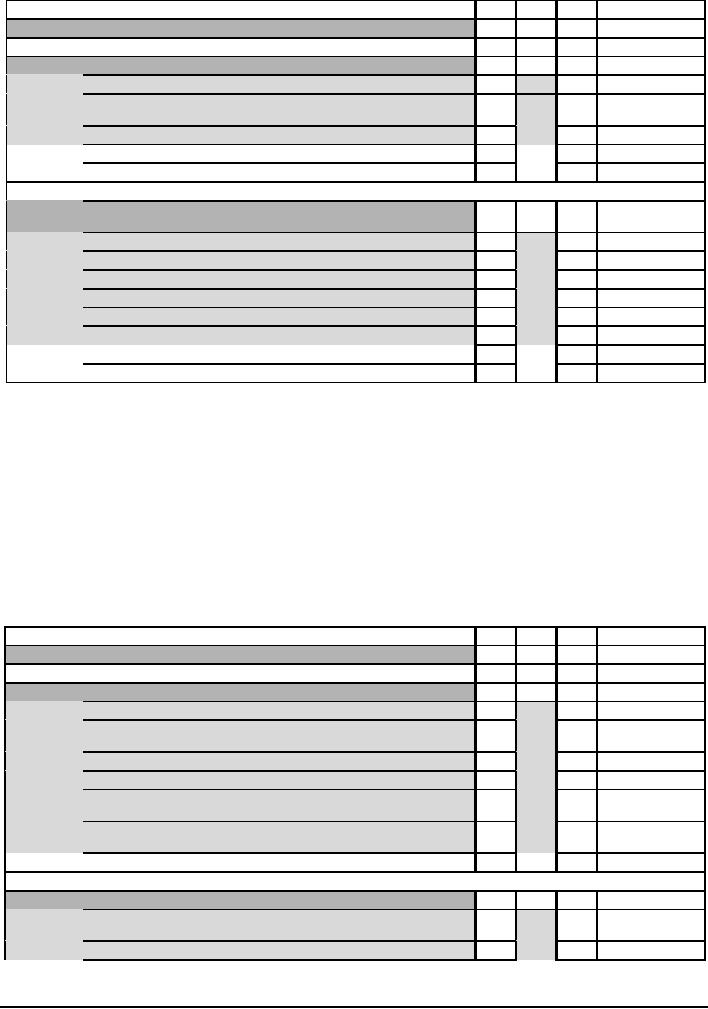
Units
and Topics
Reference
k,c,a
E,D,O Hours Related
Topics
EVO
10
Software
Evolution
EVO.pro
Evolution
processes
6
EVO.pro.1
Basic
concepts of evolution and
maintenance
k
E
EVO.pro.2
Relationship
between evolving entities
(e.g. assumptions,
k
E
MAA.af.4,DES.ar.
4
requirements,
architecture, design, code,
etc.)
EVO.pro.3
Models of
software evolution (e.g.
theories, laws, etc.)
k
E
EVO.pro.4
Cost
models of evolution
D
FND.ec.3
EVO.pro.5
Planning
for evolution (e.g.
outsourcing, in-house,
etc.)
D
MGT.pp
EVO.ac
Evolution
activities
4
VAV.par.4,MGT.c
m
EVO.ac.1
Working
with legacy systems (e.g.
use of wrappers,
etc.)
k
E
EVO.ac.2
Program
comprehension and reverse
engineering
k
E
EVO.ac.3
System and
process re-engineering (technical
and business)
k
E
EVO.ac.4
Impact
analysis
k
E
EVO.ac.5
Migration
(technical and
business)
k
E
EVO.ac.6
Refactoring
k
E
EVO.ac.7
Program
transformation
D
EVO.ac.8
Data
reverse engineering
D
4.15
Software Process
Description
Software
process is concerned with
knowledge about the
description of commonly
used
software
life-cycle process models and
the contents of institutional
process standards; definition,
implementation,
measurement, management, change and
improvement of software
processes;
and use of a
defined process to perform
the technical and managerial
activities needed for
software
development and maintenance.
Units
and Topics
Reference
k,c,a
E,D,O Hours Related
Topics
PRO
13
Software
Process
PRO.con
Process
concepts
3
PRO.con.1
Themes and
terminology
k
E
PRO.con.2
Software engineering process
infrastructure (e.g.
personnel,
k
E
tools,
training, etc.)
PRO.con.3
Modeling and specification of
software processes
c
E
MAA.rfd.2
PRO.con.4
Measurement and analysis of
software processes
c
E
MGT.ctl.3
PRO.con.5
Software engineering process
improvement (individual,
team)
c
E
FND.ef.3,PRO.im
p.4,5
PRO.con.6
Quality analysis and control
(e.g. defect prevention,
review
c
E
MAA.rv.1,VAV.re
v,QUA.pda.4
processes,
quality metrics, root cause
analysis, etc.)
PRO.con.7
Analysis and modeling of
software process
models
D
PRO.imp
Process
implementation
10
PRO.imp.1
Levels of process definition
(e.g. organization, project,
team,
k
E
individual,
etc.)
PRO.imp.2
Life cycle models (agile,
heavyweight, waterfall, spiral,
V-Model,
c
E
DES.con.3,VAV.f
SE2004
Volume 8/23/2004
30
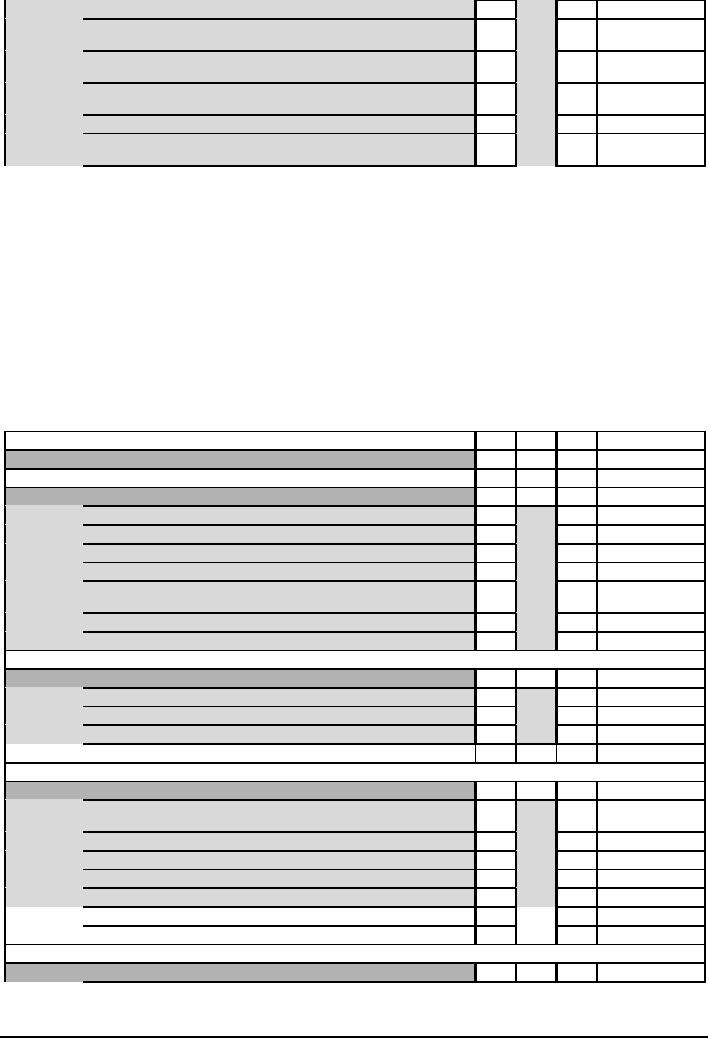
etc.)
nd.5
PRO.imp.3
Life cycle process models
and standards (e.g., IEEE,
ISO, etc.)
c
E
PRF.pr.5,QUA.pr
o.2
PRO.imp.4
Individual software process
(model, definition,
measurement,
c
E
PRO.con.5
analysis,
improvement)
PRO.imp.5
Team process (model,
definition, organization,
measurement,
c
E
PRO.con.5
analysis,
improvement)
PRO.imp.6
Process tailoring
k
E
PRO.imp.7
Requirements for software
life cycle process (e.g.,
ISO/IEEE
k
E
PRF.pr.5
Standard
12207)
4.16
Software Quality
Description
Software
quality is a pervasive concept
that affects, and is affected by
all aspects of
software
development,
support, revision, and maintenance. It
encompasses the quality of
work products
developed
and/or modified (both
intermediate and deliverable work
products) and the quality
of
the
work processes used to
develop and/or modify the
work products. Quality work
product
attributes
include functionality, usability,
reliability, safety, security,
maintainability, portability,
efficiency,
performance, and availability.
Units
and Topics
Reference
k,c,a
E,D,O Hours Related
Topics
QUA
16
Software
Quality
QUA.cc
Software
quality concepts and
culture
2
QUA.cc.1
Definitions of
quality
k
E
QUA.cc.2
Society's
concern for quality
k
E
QUA.cc.3
The costs
and impacts of bad
quality
k
E
QUA.cc.4
A cost of
quality model
c
E
MGT.pp.4
QUA.cc.5
Quality
attributes for software
(e.g. dependability, usability,
etc.)
k
E
MAA.rva.5,VAV.t
st.9,QUA.pda.5
QUA.cc.6
The
dimensions of quality
engineering
k
E
QUA.cc.7
Roles of
people, processes, methods,
tools, and technology
k
E
QUA.std
Software
quality standards
2
PRF.pr.5
QUA.std.1
The ISO
9000 Quality Management
Systems
k
E
QUA.std.2
ISO/IEEE
Standard 12207 Software Life
Cycle Processes
k
E
QUA.std.3
Organizational
implementation of standards
k
E
QUA.std.4
IEEE
software quality-related
standards
D
QUA.pro
Software
quality processes
4
QUA.pro.1
Software
quality models and
metrics
c
E
VAV.fnd.4,QUA.p
da.5
QUA.pro.2
Quality-related
aspects of software process
models
k
E
PRO.imp.3
QUA.pro.3
Introduction/overview
of ISO 15504 and the
SEI CMMs
k
E
PRF.pr.5
QUA.pro.4
Quality-related
process areas of ISO
15504
k
E
PRF.pr.5
QUA.pro.5
Quality-related
process areas of the SW-CMM
and the CMMIs
k
E
QUA.pro.6
The
Baldrige Award criteria as
applied to software
engineering
O
QUA.pro.7
Quality
aspects of other process
models
O
QUA.pca
Process
assurance
4
SE2004
Volume 8/23/2004
31
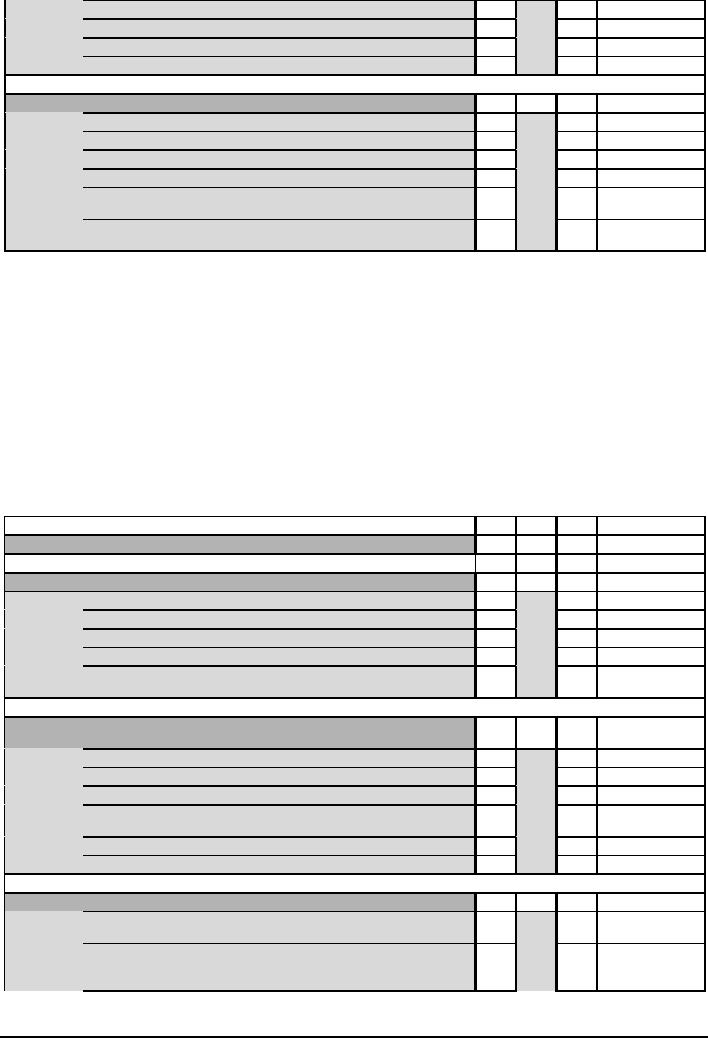
QUA.pca.1
The nature
of process assurance
k
E
QUA.pca.2
Quality
planning
a
E
MGT.pp
QUA.pca.3
Organizing
and reporting for process
assurance
a
E
QUA.pda.4
Techniques of
process assurance
c
E
QUA.pda
Product
assurance
4
QUA.pda.1
The nature
of product assurance
k
E
QUA.pda.2
Distinctions
between assurance and
V&V
k
E
VAV
QUA.pda.3
Quality
product models
k
E
QUA.pda.4
Root cause
analysis and defect
prevention
c
E
PRO.con.6
QUA.pda.5
Quality
product metrics and
measurement
c
E
VAV.fnd.4,QUA.c
c.5,QUA.pro.1
QUA.pda.6
Assessment of product quality
attributes (e.g.
useability,
c
E
reliability,
availability, etc.)
4.17
Software Management
Description
Software
management is concerned with knowledge
about the planning,
organization, and
monitoring
of all software life-cycle
phases. Management is critical to ensure
that software
development
projects are appropriate to an
organization, work in different
organizational units is
coordinated,
software versions and configurations
are maintained, resources
are available when
necessary,
project work is divided
appropriately, communication is
facilitated, and progress is
accurately
charted.
Units
and Topics
Reference
k,c,a
E,D,O Hours Related
Topics
MGT
19
Software
Management
MGT.con
Management
concepts
2
MGT.con.1
General
project management
k
E
MGT.con.2
Classic
management models
k
E
MGT.con.3
Project
management roles
k
E
MGT.con.4
Enterprise/Organizational
management structure
k
E
MGT.con.5
Software
management types (e.g.
acquisition, project,
k
E
FND.ec.4,MGT.p
p.6,EVO
development,
maintenance, risk,
etc.)
MGT.pp
Project
planning
6
VAV.fnd.2,QUA.p
ca.2
MGT.pp.1
Evaluation
and planning
c
E
MGT.pp.2
Work
breakdown structure
a
E
MGT.pp.3
Task
scheduling
a
E
MGT.pp.4
Effort
estimation
a
E
FND.ec.3,QUA.cc
.4
MGT.pp.5
Resource
allocation
c
E
MGT.pp.6
Risk
management
a
E
FND.ec.4
MGT.per
Project
personnel and
organization
2
PRF.com.3
MGT.per.1
Organizational
structures, positions, responsibilities,
and
k
E
PRF.psy.1
authority
MGT.per.2
Formal/informal
communication
k
E
PRF.com.1,
PRF.com.2,
PRF.com.3
SE2004
Volume 8/23/2004
32
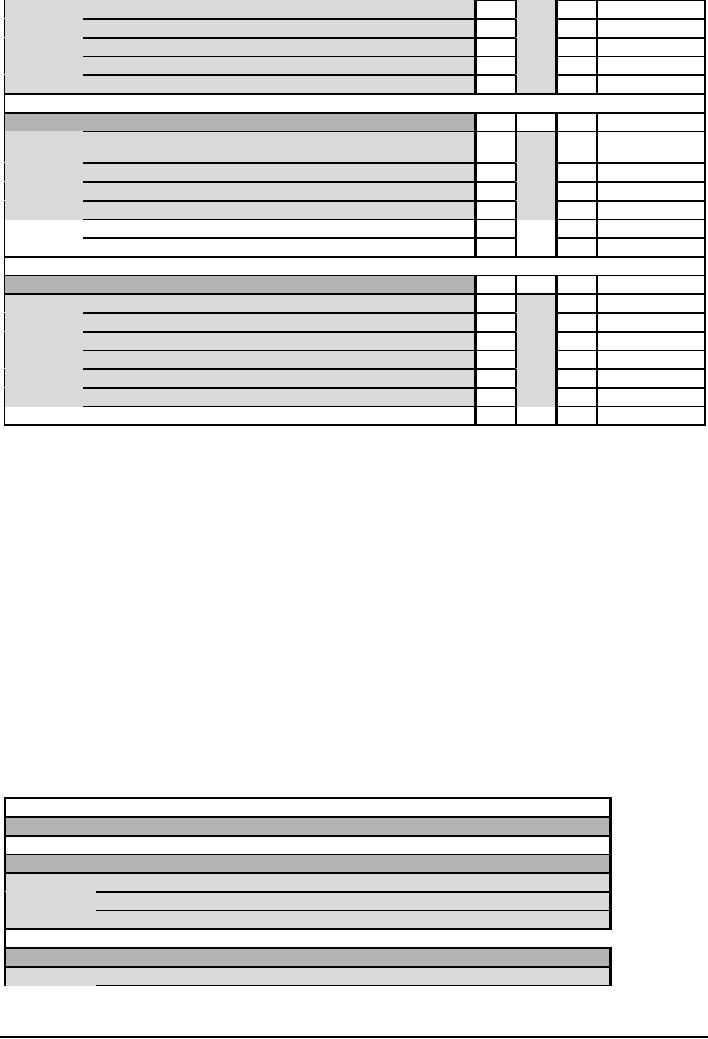
MGT.per.3
Project
staffing
k
E
MGT.per.4
Personnel
training, career development,
and evaluation
k
E
MGT.per.5
Meeting
management
a
E
MGT.per.6
Building
and motivating teams
a
E
MGT.per.7
Conflict
resolution
a
E
MGT.ctl
Project
control
4
MGT.ctl.1
Change
control
k
E
MAA.rfd.5,MGT.c
m.1,2
MGT.ctl.2
Monitoring
and reporting
c
E
MGT.ctl.3
Measurement
and analysis of
results
c
E
PRO.con.4
MGT.ctl.4
Correction
and recovery
k
E
MGT.ctl.5
Reward and
discipline
O
MGT.ctl.6
Standards of
performance
O
MGT.cm
Software
configuration management
5
MGT.cm.1
Revision
control
a
E
MGT.ctl.1
MGT.cm.2
Release
management
c
E
MGT.ctl.1
MGT.cm.3
Tool
support
c
E
MGT.cm.4
Builds
c
E
MGT.cm.5
Software
configuration management
processes
k
E
MGT.cm.6
Maintenance
issues
k
E
EVO.ac
MGT.cm.7
Distribution
and backup
D
4.18
Systems and Application
Specialties
As part of
an undergraduate software engineering
education, students should
specialize in one or
more
areas. Within their
specialty, students should
learn material well beyond
the core material
specified
above. They may either
specialize in one or more of the
ten knowledge areas
listed
above, or
they may specialize in one or
more of the application
areas listed below. For
each
application
area, students should obtain
breadth in the related
domain knowledge while they
are
obtaining a
depth of knowledge about the
design of a particular system. Students
should also
learn
about the characteristics of
typical products in these
areas and how these
characteristics
influence a
system's design and construction. Each application
specialty listed below
is
elaborated
with a list of related
topics that are needed to
support the
application.
This
list of application areas is
not intended to be exhaustive
but is designed to give
guidance to
those
developing specialty
curricula.
Specialties
and Their Related
Topics
Reference
SAS
System
and Application
Specialties
SAS.net
Network-centric
systems
SAS.net.1
Knowledge
and skills in web-based
technology
SAS.net.2
Depth in
networking
SAS.net.3
Depth in
security
SAS.inf
Information
systems and data
processing
SAS.inf.1
Depth in
databases
SE2004
Volume 8/23/2004
33
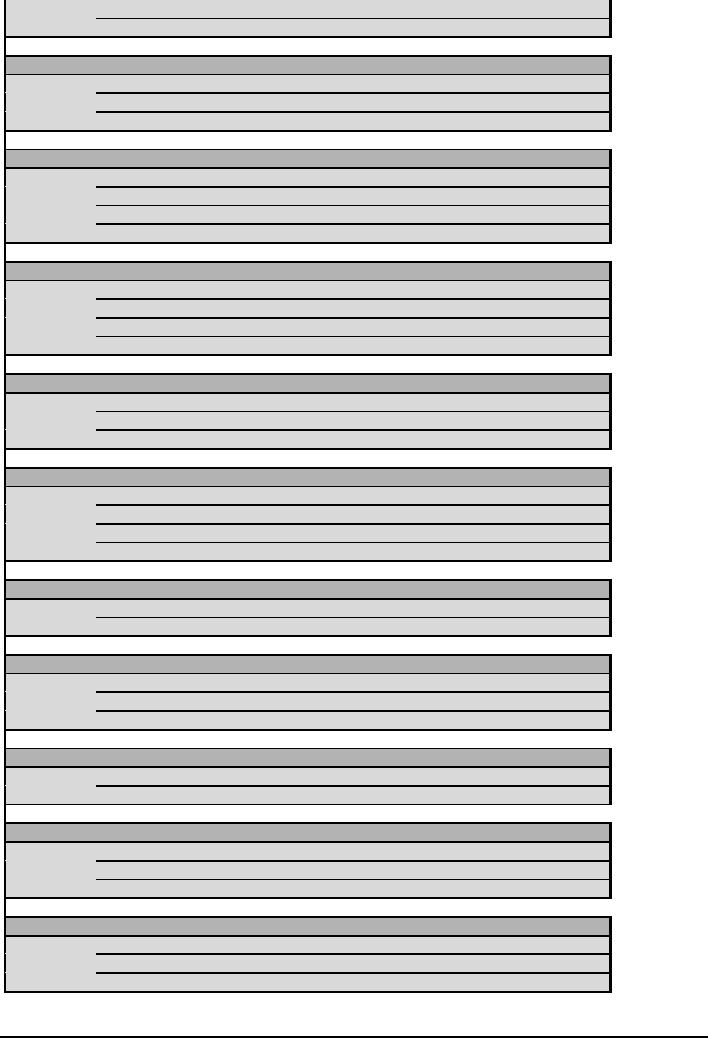
SAS.inf.2
Depth in
business administration
SAS.inf.3
Data
warehousing
SAS.fin
Financial
and e-commerce
systems
SAS.fin.1
Accounting
SAS.fin.2
Finance
SAS.fin.3
Depth in
security
SAS.sur
Fault
tolerant and survivable
systems
SAS.sur.1
Knowledge
and skills with heterogeneous,
distributed systems
SAS.sur.2
Depth in
security
SAS.sur.3
Failure
analysis and recovery
SAS.sur.4
Intrusion
detection
SAS.sec
Highly
secure systems
SAS.sec.1
Business issues
related to security
SAS.sec.2
Security
weaknesses and risks
SAS.sec.3
Cryptography,
cryptanalysis, steganography,
etc.
SAS.sec.4
Depth in
networks
SAS.sfy
Safety
critical systems
SAS.sfy.1
Depth in
formal methods, proofs of
correctness, etc.
SAS.sfy.2
Knowledge of
control systems
SAS.sfy.3
Depth in
failure modes, effects
analysis, and fault tree
analysis
SAS.emb
Embedded
and real-time systems
SAS.emb.1
Hardware
for embedded systems
SAS.emb.2
Language
and tools for
development
SAS.emb.3
Depth in
timing issues
SAS.emb.3
Hardware
verification
SAS.bio
Biomedical
systems
SAS.bio.1
Biology
and related sciences
SAS.bio.2
Related
safety critical systems
knowledge
SAS.sci
Scientific
systems
SAS.sci.1
Depth in
related science
SAS.sci.2
Depth in
statistics
SAS.sci.3
Visualization
and graphics
SAS.tel
Telecommunications
systems
SAS.tel.1
Depth in
signals, information theory,
etc.
SAS.tel.2
Telephony
and telecommunications
protocols
SAS.av
Avionics
and vehicular systems
SAS.av.1
Mechanical
engineering concepts
SAS.av.2
Related
safety critical systems
knowledge
SAS.av.3
Related
embedded and real-time
systems knowledge
SAS.ind
Industrial
process control
systems
SAS.ind.1
Control
systems
SAS.ind.2
Industrial
engineering and other
relevant areas of
engineering
SAS.ind.3
Related
embedded and real-time
systems knowledge
SE2004
Volume 8/23/2004
34
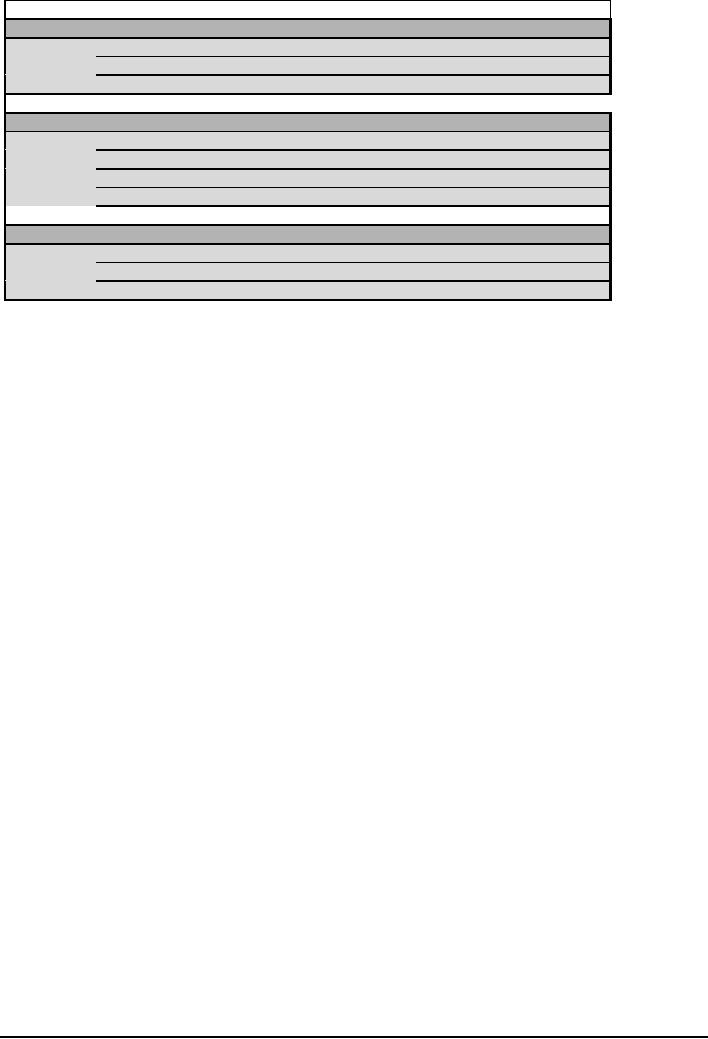
SAS.mm
Multimedia,
game and entertainment
systems
SAS.mm.1
Visualization,
haptics, and graphics
SAS.mm.2
Depth in
human computer interface
design
SAS.mm.3
Depth in
networks
SAS.mob
Systems
for small and mobile
platforms
SAS.mob.1
Wireless
technology
SAS.mob.2
Depth in
human computer interfaces
for small and mobile
platforms
SAS.mob.3
Related
embedded and real-time
systems knowledge
SAS.mob.4
Related
telecommunications systems
knowledge
SAS.ab
Agent-based
systems
SAS.ab.1
Machine
learning
SAS.ab.2
Fuzzy
logic
SAS.ab.3
Knowledge
engineering
SE2004
Volume 8/23/2004
35
Table of Contents:
- INTRODUCTION
- The Software Engineering Discipline
- Guiding Principles
- Overview of Software Engineering Education Knowledge
- Guidelines for SE Curriculum Design and Delivery
- Courses and Course Sequences
- Adaptation to Alternative Environments
- Program Implementation and Assessment
- Bibliography for Software Engineering Education
- Detailed Descriptions of Proposed Courses
- Contributors, Reviewers and Index